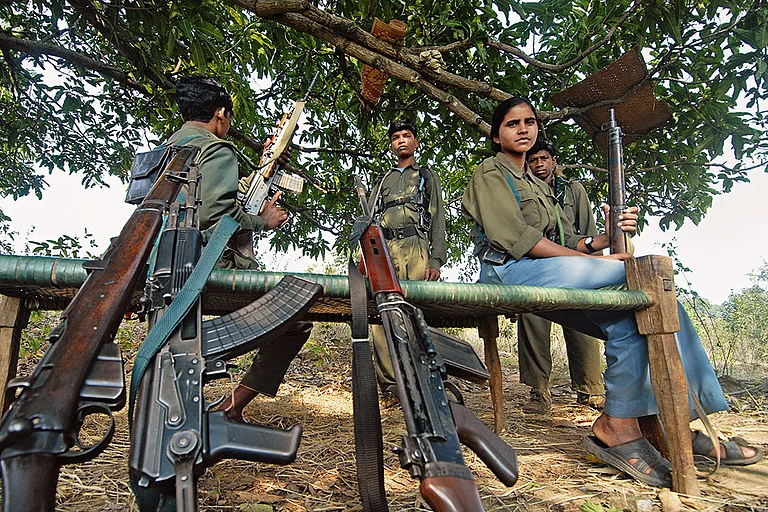The recent news of the possible removal of the ‘national monument’ tag from some of India's protected structures has sparked a debate on the process and logic behind designating sites as of national importance. In its report published in January 2023, the Economic Advisory Council (EAC) to the Prime Minister points out to the “unwieldy” number of monuments of national importance (MNI) are protected by the Archaeological Survey of India (ASI).
The MNI status, argues the EAC, hinders urban development as each MNI is subject to a 100-200 metres prohibited/regulated zone around it. In this zone, new constructions require administrative authorisations that are difficult to obtain. The report thus argues for reducing the number of MNI by reexamining the criteria for ‘national importance’. While it makes an arguable case for ‘minor’ monuments such as Kos Minars or British soldiers’ graves to be stripped of their ‘national importance’ tag and transferred to state departments of archaeology, there are fears that a politically-motivated redefinition of these criteria will lead to countless invaluable monuments built during the Sultanate, Mughal, and British periods to lose their ‘national importance’ tag and with it Central government protection.
The designation of national monuments in India is guided by the Ancient Monuments and Archaeological Sites and Remains (AMASR) Act, 1958, (updated in 2010) which gives power to the Archaeological Survey of India (ASI) to identify, manage, and conserve ancient monuments and archaeological sites. However, the criteria for designating monuments are restrictive, and the designation process is subject to bureaucratic contingencies and lack of public scrutiny.
In this article, we will highlight how the 3,695 sites protected under the ASI obtained their ‘national importance’ tag and what were the criteria for including them on such a prestigious list. (Spoiler alert: there were none.) We will examine the historical and political contexts that shape heritage conservation in India and analyse the AMASR Act and the process of designating national monuments. Our aim is to shed light on the implications of removing the status from protected structures and emphasise the need for greater transparency and public participation in the designation and protection of India’s cultural heritage.
National heritage from colonial era to Post-Independence period
Article 49 of the Constitution of India makes the protection and preservation of ‘monuments of national importance’ a Central subject, which means that only national monuments can avail the protection, maintenance and repairs of the Central government through its agency, the ASI. In addition, the Seventh Schedule states that states are responsible for ancient and historical monuments other than those of national importance. The Seventh Amendment of 1956 added that declaration of national importance was to be done by an act of Parliament.
At Independence, the category of national monuments did not exist, the British Raj being understandably afraid of calling anything ‘national’ in the Indian context. Instead, there were 2,584 monuments and sites protected under the 1904 Ancient Monuments Preservation (AMP) Act. These sites had been selected for their ‘historical, archaeological or artistic interest’, following a purely curatorial logic. In 1951, the Ancient and Historical Monuments and Archaeological Sites and Remains (Declaration of National Importance) Act declared all monuments already protected to be of ‘national importance’, and added 736 monuments from erstwhile Princely States. The national list thus contained 3,320 monuments before 1958.
The first comprehensive review of conservation policy after Independence came with the Ancient Monuments and Archaeological Sites and Remains Act, 1958. This act was an update of the AMP Act, 1904, and brought about several revisions rather than a complete rupture with colonial policy. It clarified the role of the Archaeological Survey of India in preserving monuments, updated the definition of an ‘ancient monument’, and detailed the process for declaring a monument protected.
One innovation in the 1958 AMASR Act was the introduction of a 100-year-criteria to the definition of ‘ancient monument’. This meant that, at the time it was passed, no structure erected after 1858, that is, the entire duration of the British Raj, could be included as monument. While this move can be understood as part of a will to ‘decolonise’ Indian national heritage in which buildings by British rulers had no place under the new political circumstances, this also left out buildings built by Indian citizens in an era of tremendous social, economic, and political transformation. This arbitrary temporality, for instance, foregoes the possibility of declaring houses or building associated with freedom fighters as national monuments.
Navigating the intricate bureaucracy of MNIs
As the procedure of declaring new monument to be of national importance by an act of Parliament was too cumbersome, the 1958 act empowers the Central government to declare any ‘ancient monument’ to be protected if the government is ‘of the opinion’ that the monument is of national importance. However, the AMASR act does not provide guidance as to what counts as national and what does not, which is precisely what certain people would like to see reformed today.
A dive into the archival records of the ASI from the 1960s brings to light interesting facts about the process of declaring monuments protected, and the inner workings and bureaucratic contingencies that led to some buildings coming under government protection and some others failing to obtain it.
The ASI’s geographical subdivisions are called ‘Circles’, each headed by a Superintendent Archaeologist. The Superintendent would routinely tour his Circle for ‘surveying’, that is, looking for new sites to preserve. When a building with potential is identified, he would then write a short recommendation for protection and send it, accompanied with a few photographs, to the Director General in Delhi. If the recommendation is accepted, the DG will present it at the next meeting of the Standing Committee of the Central Advisory Board of Archaeology (CABA), which decides whether the recommendation will be voted on at the next CABA. The CABA is chaired by the Minister for Education or Culture, and is comprised of prominent archaeologists, bureaucrats, and academics, who vote to approve the protection recommendations (always a formality).
Once the recommendation is accepted, it is notified in the Gazette of India and the building becomes protected under the AMASR Act as a monument of national importance. A study of the discourse used by ASI officers in their recommendations shows that the ‘historical, archaeological, or artistic importance’ plays an important role in decision-making, while the question of ‘national importance’ is irrelevant. Superintendents go on describing the site’s architectural features, paintings, or inscriptions: what matters is the monument’s value as a source for historians or its representativeness of a particular style, culture or era. But most often, ASI officers would use simple adjectives such as ‘interesting’, or ‘lovely’, without feeling the need to further elaborate. And these descriptions would be accepted as perfectly valid and sufficient for the DG and the CABA to make a decision on protecting a monument.
It shows experts talking to other experts, people with the same training, who understand each other, using what Laurajane Smith calls the ‘authorised heritage discourse’. The process of declaring a monument protected remains in the hands of a small number of these experts sitting in committees. It is bureaucratic and opaque, and evades Parliament or public scrutiny. The question of ‘national importance’ never seems to play a role; to be fair, it is not defined in the law.
Deprotection and devolution
‘National importance’ came to play a role in the 1960s when the ASI started reassessing the monuments under its protection. The AMASR Act 1958 made provisions for states to set up their own Departments of Archaeology and Museums to protect ‘monuments other than of national importance’ as defined in the Constitution. Some states, like Andhra Pradesh, had inherited from the Hyderabad state a competent department, while others such as Bihar, had to be pressed on by the Central government to pass the required legislation. In 1959, the ASI started a campaign aiming to ‘deprotect’ several monuments under its custody — similarly to what the EAC is proposing to do now. However, deprotection did not mean abandonment: monuments were to be transferred to the care of the concerned state.
On examination, this policy of devolution was and driven more by the ASI’s financial difficulties, than by a commitment to federalism. Unable to look after more than 3,000 MNIs, the ASI undertook to transfer the more ‘minor’ ones to states, often without any coordination. States were not informed in advance of the transfer, limited financial assistance was provided, no information about the monuments were provided, and sometimes monuments were transferred even before the state had passed the required legislation! The assessment on whether a monument should remain of ‘national importance’ or be transferred to states followed the same procedure as detailed above. The main criterion was again their archaeological or artistic importance. And while monuments, as symbols of the past, play a sizeable role in the formation of territorial identity, be it local, regional, national, or global, never was this criterion mentioned in the correspondence of ASI officers.
The opacity of the selection process led to many ‘minor’ monuments being preserved as MNI: situations which the EAC reports points out as anomalies. It also in a way preserved the selection of monuments from being politicised by political parties: by leaving the process in the hands of experts, it ensured that only criteria which they considered objective would play a role, and not identity politics. However, the composition of these expert boards, which overrepresented scholars and academics and underrepresented architects and members of the civil society, contributed to making India’s heritage conservation policy very much monument-centric. It led to a focus on preserving only buildings which were interesting to scholars — those representative of the political and religious elites and completely left out vernacular architecture and the heritage of the merchants, workers, women and other marginalised communities.
Moving beyond monuments
In conclusion, the ongoing debate surrounding the possible removal of the ‘national monument’ tag from some of India's protected structures presents an opportunity to rethink the country’s heritage conservation policy. As we have discussed, the designation process for monuments of national importance has been largely arbitrary and opaque, with little emphasis on national importance or public participation.
A fundamental shift in perspective is needed to address these issues. India must stop perceiving its heritage as a burden to be managed for development and instead recognise it as a potential resource for social, economic, and cultural growth. Rather than obsessing over the origin of monuments in determining their ‘national importance’ and consequently allocating resources for their protection, the government should adopt a more comprehensive approach that acknowledges the diverse range of cultural heritage present within the country. This perspective shift requires expanding the pool of resources available for heritage conservation at the central, state, and municipal levels. ASI and Culture Ministry have been facing consecutive budget cuts, severely curtailing their ability to protect, maintain, and develop the sites they currently manage.
There is no denying that a sensible revision of the 100-200 meters rule on a case-by-case basis is needed. The current rules and regulations tend to create homogeneity that prioritise the rights of a few while disregarding the rights of many. In fact, regulated zones in India present difficulties for historical precincts, as addressing the maintenance of havelis and other heritage homes close to safeguarded monuments involves dealing with a complex bureaucratic procedure. Development projects and conservation need not exist in conflict and mutual consensus can be reached by balancing diverse interests and promoting dialogue among stakeholders. India’s conservation policy currently relies on regulatory measures without providing alternative incentives or support to local communities. To enable the sustainable development of historic landscapes, it is crucial to transition from a monument-centric approach to a more holistic perspective on heritage conservation.
This shift necessitates a broader recognition of vernacular architecture, diverse cultural expressions, and the historical contributions of various social classes. Additionally, the designation process should be revised to promote transparency, non-partisan stakeholder consultation, and cooperative federalism. This can only be done by developing clear and objective criteria for assessing national importance, which associates civil society, urban bodies, architects, and conservation experts.
(Ekta Chauhan is pursuing her PhD in Heritage Studies at the Brandenburg University of Technology, Cottbus, Germany. She works on themes of heritage, communities, and urban development. She runs the project Dilli ki Khirki, an oral history archival project for the communities of urban villages of Delhi in partnership with the Citizens’ Archive of India. Laurent Glattli is a historian working on post-colonial heritage conservation policy in India (1947-72). He is doing his PhD from Humboldt University, Berlin, Germany, and is a visiting doctoral student at the Centre for Social Sciences and Humanities, New Delhi. Views expressed are personal to authors.)





















